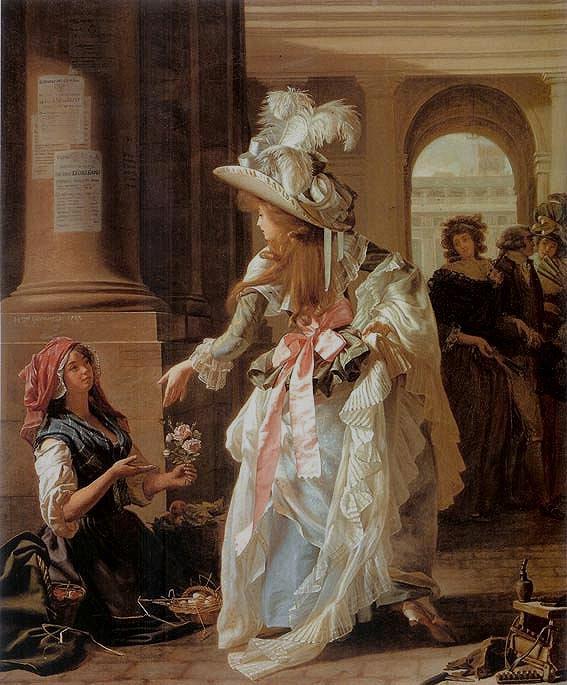
A Fashionably Dressed Young Woman in the Arcade of the Palais Royal, Garnier, 1787.
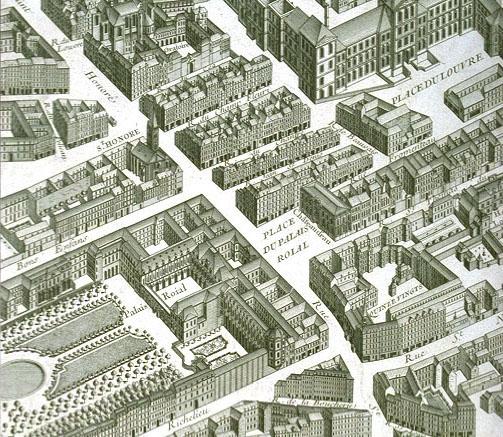
Detail from Turgot’s map of Paris, showing the Palais Royal.
Most of the action in Minette, my forthcoming novel about Princess Henrietta-Anne Stuart, occurs at the Palais Royal, where she lived with her mother Henrietta-Maria and an assortment of family members, exiled courtiers and general hangers on from 1652 onwards, having previously resided in apartments at the Louvre.
It was a pleasure to write at length about the Palais Royal, as it is one of my most very favorite spots in Paris. It’s so serene and elegant and harmoniously proportioned that it is hard not to feel really calm and happy there and the graceful sandstone colonnades are just as they were in the eighteenth century, when the Palais was the central hub of fashionable Parisian life so it is very easy to imagine glamorous celebrities such as Joséphine de Beauharnais, the Duchesse de Polignac, Émilie de Sainte-Amaranthe, Lucile Desmoulins and Aimée de Coigny strolling at their leisure beneath the beautiful columns and gossiping with their friends in the bustling, fashionable coffee shops and restaurants that used to line the arcades.
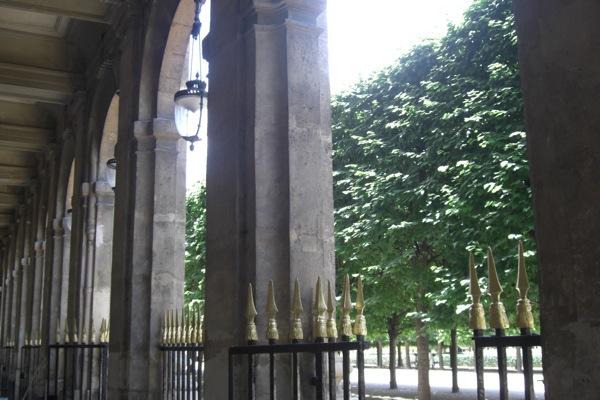
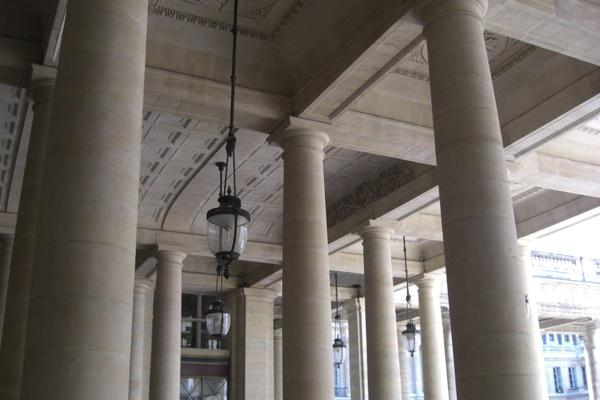
The Palais Royal. Photos: my own.
The Palais Royal was originally the Parisian home of Cardinal Richelieu and was completed by the architect Lemercier in 1629. When Richelieu died in 1642, he left the gloriously beautiful palace to the French royal family, who were probably glad of a Parisian home that wasn’t the uncomfortably Medieval Louvre, which is just next door. Louis XIV spent part of his boyhood in the Palais Royal with his mother Anne of Austria and younger brother Philippe before it was turned over the use of the deposed Queen of England, Henrietta Maria, her young daughter Henriette ‘Minette’ and their crowd of exiled English hangers on after the young King returned from St Germain in the aftermath of the Fronde uprising and decided to take up residence in the far grander Louvre instead, which meant that the English exiles were obliged to move across the Rue St Honoré to the Palais Royal instead.
Henrietta Maria and her small court were often woefully short of money as she sent most of her small pension from the French state coffers across to her husband Charles I to assist in his war effort in England. Ironically, she was to become much better off after his execution in 1649 as her funds were no longer required elsewhere but it was not until her son Charles reclaimed the throne in 1660 that her financial situation properly eased up. In the meantime, the former English queen lived as best she could, selling jewelry to make ends meet (her famous pearls were sold to Louis XIV as a parting present for his love Marie Mancini) and upsetting her also rather impoverished sons by presenting them with highly detailed itemised bills for the cost of their lodging, fuel, candles and food whenever they came to visit her.
Despite all the privations and occasional mortifications of their situation, Henrietta-Maria’s youngest daughter, Henrietta-Anne enjoyed a happy childhood at the Palais Royal, which although somewhat shabby and scuffed about the edges was still a gracious and rather pleasing residence. Here she enjoyed lessons in music, dancing, poetry, philosophy and art and spent time with the young people of her mother’s court, such as her very distant cousin and future beauty Frances Stewart as well as her rather more grand cousins from the Louvre across the way – Louis XIV, his brother Philippe and their much older cousin, the difficult and rather terrifying Anne-Marie de Montpensier.
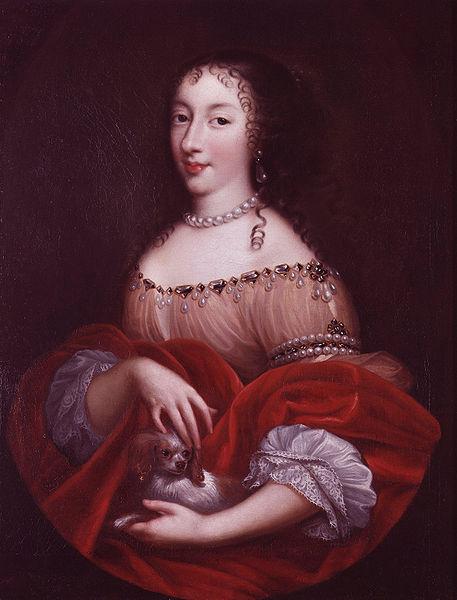
Henrietta-Anne, Mignard. Photo: Château de Versailles.
On the 31st March 1661, the lovely Princesse Henrietta-Anne was married to her cousin, Philippe, Duc d’Orléans in the Palais Royal’s exquisite chapel and the young couple took up residence there, making it the Parisian seat of the Orléans family from that point on, while Henrietta Maria, probably feeling like her work was done now that she had successfully married her daughter off into the French royal family (or indeed ANY royal family) retired to the Château de Colombes in the countryside.
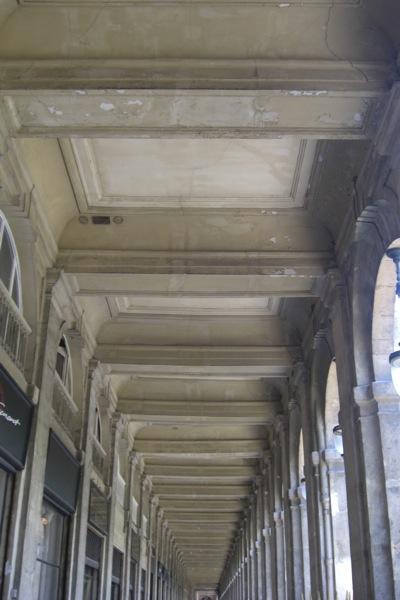
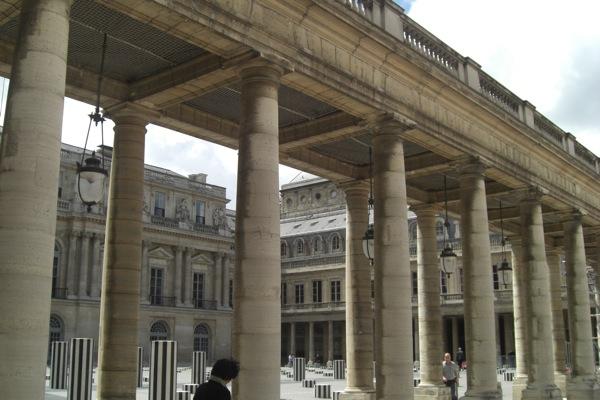
Palais Royal. Photos: my own.
The new Duc and Duchesse d’Orléans were blessed with exquisite taste even if they did not generally agree on anything else and they transformed their new home into the center of French aristocratic society. It is Henrietta-Anne that we have to thank for the Palais’ lovely formal gardens where modern Parisians still sit and quietly enjoy their lunch surrounded by tranquil rows of trees. While her brother in law, Louis XIV was busily transforming his father’s old hunting base at Versailles into a magnificent palace and busily trying to persuade his courtiers to basically colonize the town he was designing to surround it, Henriette and Philippe were making the Palais Royal the focus of Parisian social life by throwing gorgeous balls and splendid parties on a weekly basis.
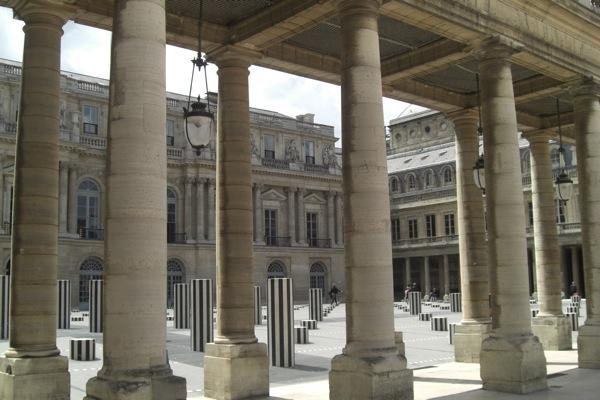
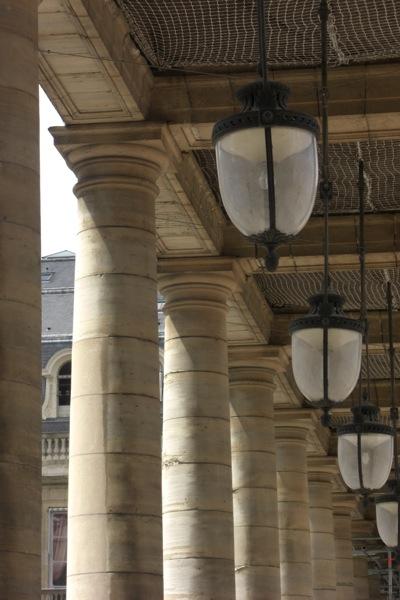
Palais Royal. Photos: my own.
Over the years, the Palais Royal continued to evolve and be transformed by succeeding generations of the Orléans family. In 1692, when Philippe’s heir, the Duc de Chartres married his cousin, Françoise-Marie de Bourbon, the daughter of Louis XIV and Athénaïs de Montespan (who had once been a lady in waiting at the Palais Royal before she caught the King’s wandering eye), a whole new wing was built alongside the Rue de Richelieu in order to house the new Duchesse’s apartments and servants as well as a new picture gallery for her father in law.
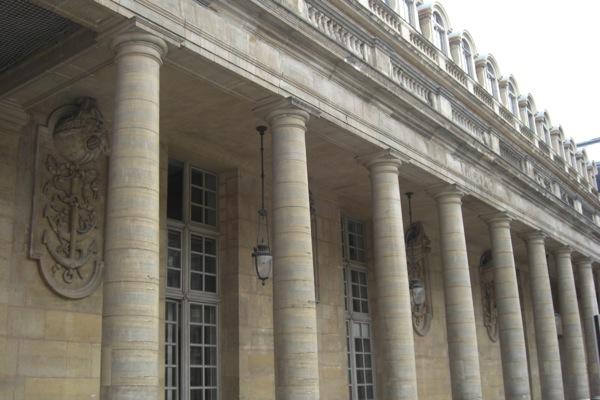
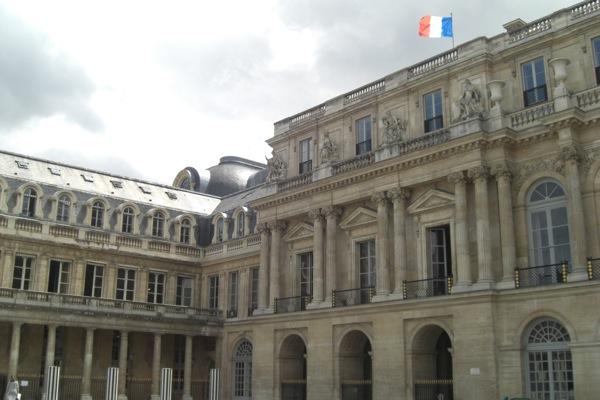
Palais Royal. Photos: my own.
The Palais Royal was to become even more important in the early years of the eighteenth century when Louis XIV died in 1715, leaving his five year old grandson, Louis XV as successor. The young King was raised at the Tuileries under the watchful eye of his guardian and cousin, the Duc d’Orléans at the neighbouring Palais Royal. Of course rumours abounded that the all powerful Duc would end up doing away with the little King but on the contrary, Orléans seems to have made an excellent guardian who genuinely had his young charge’s best interests at heart.
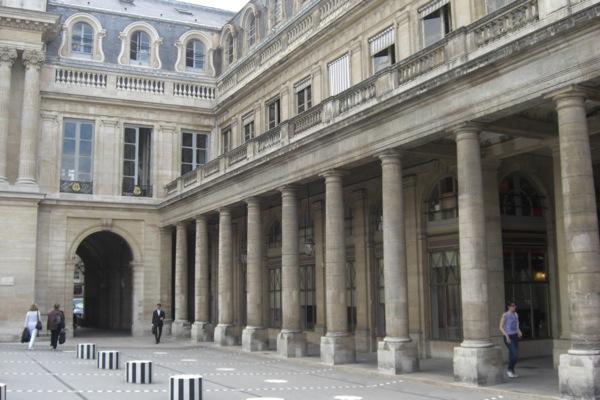
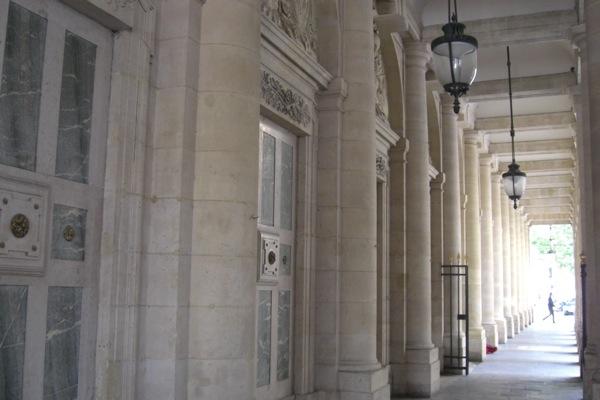
Palais Royal. Photos: my own.
The Duc’s private life did not bear up to scrutiny however and the elegant Palais was scene to notorious orgies during which Orléans, his friends and family consorted with prostitutes of both sexes, actresses and even footmen. There were even rumours that Orléans was having an overly close relationship with his own daughter but was this was doubtless just malicious gossip. The behavior of the next generation was not much better with his daughter in law, Louise Henriette de Bourbon also becoming notorious thanks to her affairs and bad behavior.
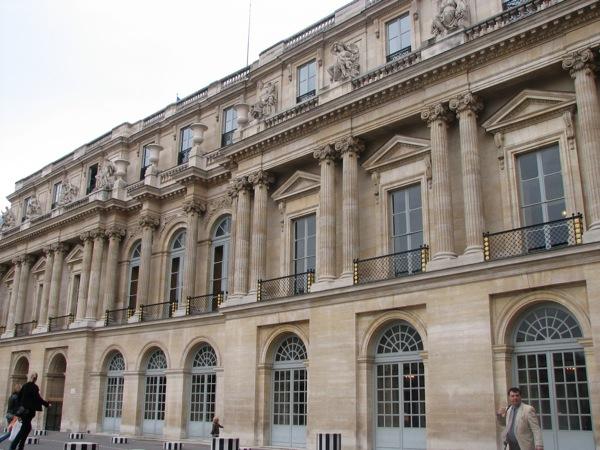
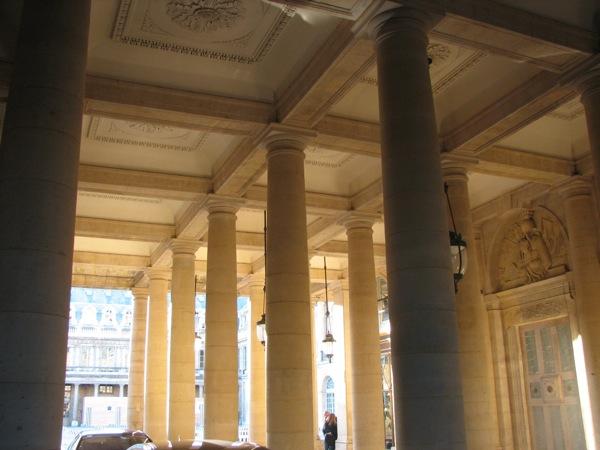
Palais Royal. Photos: my own.
When Louis-Philippe, Duc de Chartres took possession of the Palais Royal in 1780 he immediately moved there with his wife, the heiress Louise-Marie-Adélaïde de Bourbon and began a process of expanding and remodelling the mansion, which culminated in the gardens and new arcades being opened to the public in 1784 as what was the eighteenth century precursor of a shopping mall or a one stop entertainment and shopping destination with everything that you could possibly want. The main mansion was still inhabited by the Orléans family but the noble colonnades now housed 145 cafes, shops, hairdressers, restaurants and gambling dens and was soon frequented by all of the Parisian classes from the circle that surrounded Marie Antoinette to the lowest prostitutes who would prowl the arcades in search of clients.
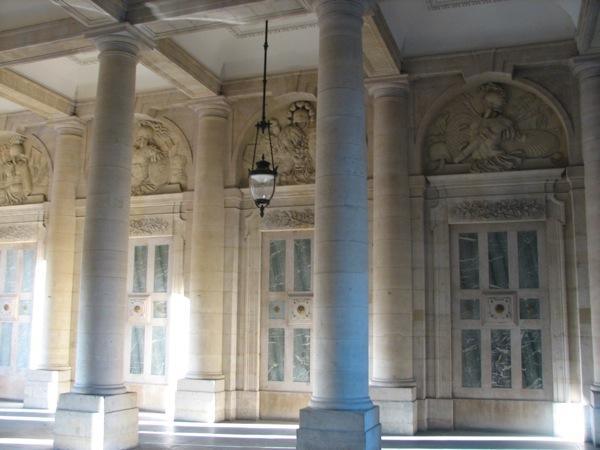
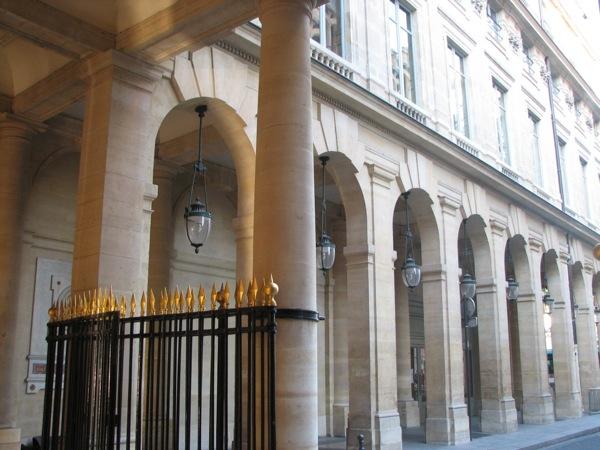
Palais Royal. Photos: my own.
The Palais Royal was as popular as ever during the Revolutionary period, when the Duc d’Orléans aligned himself with the Revolutionaries and turned on his cousins, the royal family. It was at a café in the Palais Royal that his protegé, Camille Desmoulins called the assembled people to take arms and march on the Bastille in July 1789 and it was in one of the colonnades many shops that Charlotte Corday was to buy the knife with which she stabbed Marat.
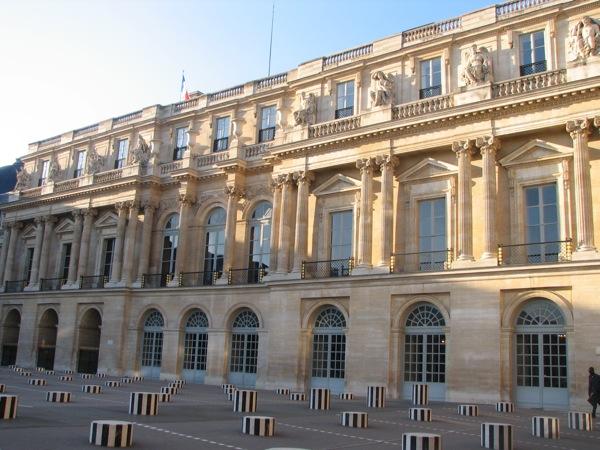
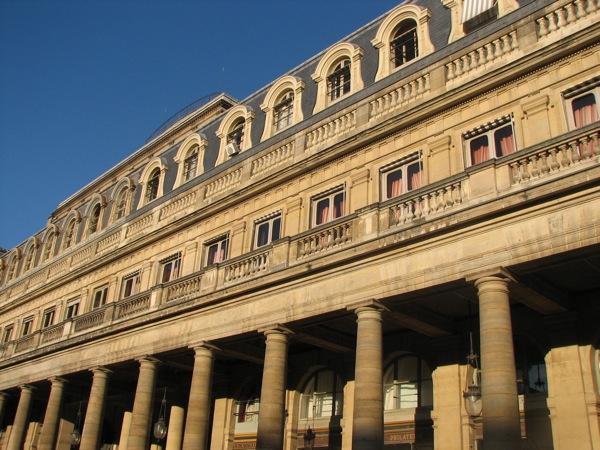
Palais Royal. Photos: my own.
Madame Vigée-Lebrun described the Palais Royal in its heyday in her memoirs:
‘On Sundays and saints’ days, after hearing high mass, my mother and my stepfather took me to the Palais Royal for a walk. The gardens were then far more spacious and beautiful than they are now, strangled and straightened by the houses enclosing them. There was a very broad and long avenue on the left arched by gigantic trees, which formed a vault impenetrable to the rays of the sun. There good society assembled in its best clothes. The opera house was hard by the palace. In summer the performance ended at half-past eight, and all elegant people left even before it was over, in order to ramble in the garden. It was the fashion for the women to wear huge nosegays, which, added to the perfumed powder sprinkled in everybody’s hair, really made the air one breathed quite fragrant. Later, yet still before the Revolution, I have known these assemblies to last until two in the morning. There was music by moonlight, out in the open; artists and amateurs sang songs; there was playing on the harp and the guitar; the celebrated Saint Georges often executed pieces on his violin. Crowds flocked to the spot.’
The Palais Royal is rather less lively nowadays but it is still a charming spot and I always find myself making excuses to cut through it so that I can admire the beautiful architecture and day dream a little about its former residents.
Minette, my novel about Henrietta-Anne Stuart is out on the 22nd of April.
If you just can’t wait and are hankering after a spot of POSH DOOM and ARISTOCRATIC INIQUITY in beautiful Paris then my novel Before the Storm is now just 99 cents from Amazon US and 79p from Amazon UK.
